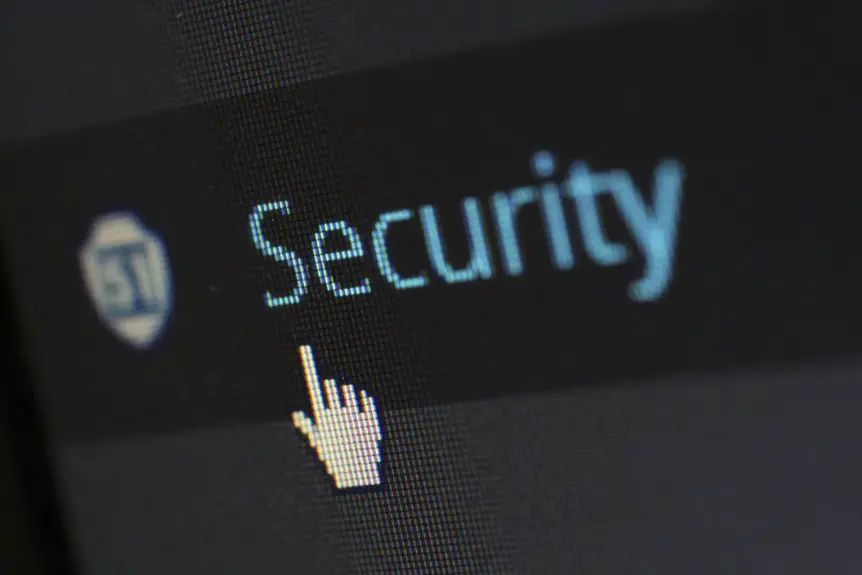To fix a jumpy vertical mouse cursor, start by checking your mouse surface and using a mouse pad. Clean your mouse and its sensor regularly to remove dust. Adjust your mouse settings for sensitivity and speed in your computer's control panel. Update or reinstall your mouse drivers if problems persist. If the issue continues, test your mouse on another computer to rule out hardware issues like frayed cables or low battery levels. There's more to explore, so keep going!
Table of Contents
Key Takeaways
- Ensure the mouse is used on an appropriate surface, avoiding shiny or reflective materials, and consider using a mouse pad for better tracking.
- Clean the mouse and its sensor regularly, as dust and debris can cause erratic cursor movement.
- Adjust mouse settings in your computer's control panel or system preferences, modifying pointer speed and disabling enhanced pointer precision if necessary.
- Update or reinstall the mouse drivers through the manufacturer's website or device manager to improve performance and fix compatibility issues.
- Test the mouse on another computer to rule out hardware issues, checking for dirty sensors and inspecting cables or battery levels for problems.
Check Your Mouse Surface
One common reason for a jumpy mouse cursor is the surface you're using. If your mouse is on a shiny or reflective surface, it can struggle to track movements accurately.
Try using a mouse pad or a textured surface instead. Cloth or rubber pads usually work best, providing the right friction for smooth tracking.
If you're using a laptop, ensure the area is clean and free from dust. Sometimes, even small particles can interfere with the sensor.
Experiment with different surfaces to see what feels best. If you're still having issues, it might be worth checking if your mouse is compatible with the surface.
A simple change could dramatically improve your cursor's stability and responsiveness.
Adjust Mouse Settings
When your mouse cursor acts jumpy, adjusting your mouse settings can make a big difference.
You can tweak the pointer speed, enhance pointer precision, and modify mouse acceleration to find what works best for you.
Let's explore these options to help you achieve smoother cursor movement.
Pointer Speed Adjustment
Adjusting the pointer speed can significantly improve your mouse's responsiveness, especially if you're experiencing a jumpy cursor.
To start, head to your computer's settings. If you're using Windows, go to the Control Panel, select "Mouse," and then navigate to the "Pointer Options" tab. Here, you'll find the pointer speed slider. Slide it left for slower speeds or right for faster speeds, depending on your preference.
For Mac users, go to "System Preferences," click on "Mouse," and adjust the "Tracking Speed" slider.
After making adjustments, test the cursor to see if it feels smoother. Don't hesitate to tweak the settings again until you find the perfect balance that works for you. Your comfort is key!
Enhance Pointer Precision
To enhance your mouse's precision, you can enable a feature called "Enhance Pointer Precision." This setting adjusts the cursor's movement based on how fast you move your mouse, allowing for finer control during slow movements while still being responsive during quick actions.
To enable this feature, go to your computer's mouse settings. On Windows, access the Control Panel, select "Mouse," and navigate to the "Pointer Options" tab. Here, check the box next to "Enhance Pointer Precision."
On macOS, go to "System Preferences," choose "Mouse," and adjust the tracking speed.
After making these changes, test your cursor movement. You should notice improved accuracy, making it easier to navigate and select items on your screen without the jumpiness.
Mouse Acceleration Settings
If your mouse cursor still jumps despite enhancing pointer precision, it might be time to tweak your mouse acceleration settings.
Mouse acceleration can make your cursor move unpredictably, especially when you're trying to be precise. To adjust these settings, go to your computer's control panel or settings menu.
Look for the mouse settings section, and find the option labeled "Mouse Acceleration" or "Enhance Pointer Precision." You can either disable it or adjust the sensitivity slider to suit your preference.
Disabling mouse acceleration often helps with accuracy, making your movements more consistent. Once you've made these adjustments, test your mouse again to see if the jumping issue is resolved.
Don't hesitate to experiment until it feels just right!
Clean Your Mouse
If your mouse cursor is still jumpy, it might be time to clean your mouse.
Dust and debris can gather on the sensor and the mouse feet, affecting performance.
Don't forget to check the surface area where you use your mouse, as it can impact tracking, too.
Dust and Debris Removal
A clean mouse can significantly improve your cursor's performance, so tackling dust and debris is essential.
Start by unplugging your mouse or turning it off if it's wireless. Use a soft, lint-free cloth lightly dampened with water or a mild cleaning solution to wipe the exterior. Pay special attention to the buttons and scroll wheel, as dirt can accumulate there.
For hard-to-reach areas, a cotton swab works wonders. Next, check the sensor on the bottom of the mouse; it's crucial for tracking accuracy. If it's dirty, gently clean it with a dry cloth.
Finally, let everything dry before reconnecting. Regular cleaning keeps your mouse functioning smoothly, reducing jumpiness and improving your overall experience.
Check Mouse Feet
Mouse feet play a critical role in how smoothly your cursor glides across the screen. If they're dirty or worn down, your cursor can start to jump or lag. Take a moment to check the mouse feet for any dust, grime, or scratches. Cleaning them can significantly improve your experience. Use a soft cloth or cotton swab to wipe them down gently.
| Issue | Emotion Evoked |
|---|---|
| Dirty mouse feet | Frustration |
| Worn mouse feet | Disappointment |
| Clean mouse feet | Satisfaction |
| Smooth movement | Joy |
| Effortless control | Empowerment |
Cleaning Surface Area
After ensuring the mouse feet are clean, the next step is to focus on the surface area of your mouse itself. A dirty mouse can lead to erratic cursor movements, which can be frustrating.
Grab a microfiber cloth and some isopropyl alcohol to give your mouse the care it deserves. Here's what you should do:
- Wipe down all surfaces, including buttons and the scroll wheel, to remove grime and oils.
- Pay special attention to crevices, where dirt tends to accumulate and disrupt functionality.
- Let it dry completely before plugging it back in, ensuring you don't create any sticky situations.
Taking these steps won't only improve your mouse's performance but also enhance your overall computing experience.
Update or Reinstall Mouse Drivers
Updating or reinstalling your mouse drivers can often resolve the issue of a jumpy cursor.
To start, visit the website of your mouse manufacturer or use your computer's device manager. If you're using Windows, right-click on the Start button, select Device Manager, and find your mouse under "Mice and other pointing devices."
Right-click on it and choose "Update driver." Follow the prompts to search automatically for updated driver software.
If that doesn't work, you can uninstall the driver and restart your computer. Your system should automatically reinstall the correct driver upon reboot.
After updating or reinstalling, test your mouse to see if the jumpy cursor issue persists. This step can make a significant difference in your mouse performance.
Disable Pointer Precision
If you've tried updating your mouse drivers and the cursor is still jumpy, it might be time to disable enhanced pointer precision. This feature can sometimes create more problems than it solves.
Here's how to do it:
- Go to the Control Panel and select "Mouse."
- Click on the "Pointer Options" tab.
- Uncheck the box next to "Enhance pointer precision" and hit "OK."
Disabling this option can lead to smoother cursor movement, making your experience more enjoyable.
Imagine finally being able to navigate your screen without frustration. Picture yourself effortlessly clicking through tasks, and feeling in control again.
You deserve a seamless computing experience, so give this a try!
Test on a Different Computer
Have you considered testing your mouse on a different computer? This step can help you determine if the issue lies with your mouse or your current setup.
Simply plug your mouse into another device and observe its performance. If the cursor behaves normally on the second computer, you might need to revisit your settings or software on the original machine.
On the other hand, if the cursor remains jumpy, your mouse could be the culprit. Testing on a different computer can save you time and frustration, helping you pinpoint the problem more efficiently.
Consider Hardware Issues
While testing your mouse on another computer can help narrow down the issue, it's crucial to consider potential hardware problems that might be affecting its performance.
Here are three common hardware issues to check:
- Dirty Sensor: A buildup of dust or debris can interfere with the sensor's operation, causing erratic cursor movement. Clean it regularly!
- Worn-out Cable: If you're using a wired mouse, inspect the cable for frays or breaks. A damaged cable can disrupt the connection and create a jumpy cursor.
- Battery Issues: For wireless mice, low battery levels can lead to performance problems. Replace or recharge the batteries to see if it resolves the issue.
Addressing these hardware concerns can significantly improve your mouse's performance and provide a smoother experience.
Frequently Asked Questions
Can a Faulty USB Port Cause Cursor Jumping Issues?
Absolutely, a faulty USB port can cause cursor jumping issues. If your mouse isn't getting a stable connection, it can lead to erratic movements. Try using a different port to see if that resolves the problem.
How Can I Tell if My Mouse Is Defective?
To determine if your mouse is defective, check for erratic movements, unresponsive buttons, or connection issues. Try it on another device; if problems persist, it's likely time to replace or repair your mouse.
Does the Cursor Jump More on Certain Operating Systems?
Yes, you might notice the cursor jumps more on certain operating systems due to differences in mouse drivers and settings. It's worth testing on various platforms to see if the issue persists across them.
Are Wireless Mice More Prone to Cursor Jumping Than Wired Ones?
Wireless mice can be more prone to cursor jumping due to potential interference or battery issues. However, many users experience smooth performance with both wired and wireless options, so it's essential to choose quality devices.
Can Background Applications Affect Mouse Performance?
Yes, background applications can definitely affect mouse performance. They consume system resources, which might slow down your computer and cause cursor lag. Closing unnecessary programs can help improve your mouse's responsiveness and overall performance.




